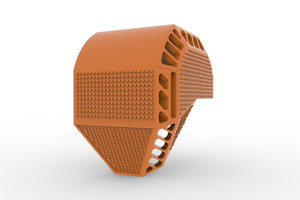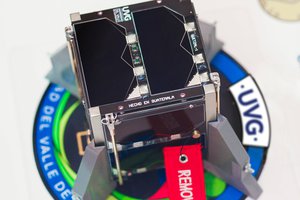The system is designed to be deployed rapidly in the after math of a disaster with the assumption that the existing telecommunication infrastructure is destroyed or severely impaired due to damage or just due to the volume of traffic.There are facilities for low data rate and high data connection to people outside of the disaster region. In addition to providing regional communications the system is designed to provide information to citizen from local emergency services.
The system is designed to work in urban and rural environments. The key aspects of a successfully deployment in the after math of a disaster is planning in order to cope with large geographic obstacles such as hill and mountain and man made obstacles such a building and bridges that can block line of sight connection between nodes. In those case where obstacles exist more dense deployments of nodes may be required or the use of longer range technologies such as HAM radio frequencies and LTE might be required. The system is designed to be flexible and if the appropriate licenses are in place longer range technologies can be used. In more rural communities where the existing LTE coverage is non-existent and very few geographic and man made physical obstacles exist the system can use WiFi connection which require no license. Where long range, lower data capacity is appropriate HAM radio frequencies can be used. Legal access to HAM frequency on requires technicians operator license. Where a carrier can use the existing wireless spectrum and license. The single platform of the system is designed to scale to meet the needs of the community and licensing and geographic are the critical considerations of the nature of the deployment.
This is a mesh network telecommunications system designed to be deployed in the immediate after math of a disaster. It is based on a telecommunication system designed to be deployed in un-served communities in developing countries (CEMN - https://hackaday.io/project/21641-cemn-community-engagement-mesh-network). The original system focused on minimizing cost, being able to be manufactured locally and being able to be assembled and maintained with people without advanced technical skills. The focus of this system is ease of deployment, large geographic coverage area, robustness of design, high user capacity, being able to be powered in a region with unreliable power and scalability. The project draws heavily from open source initiatives in order to ensure the design can be easily build and easily improved upon. Core elements like the message service, registration server, access points and bridges in the nodes of the mesh have been test in the original CEMN design. The new elements of the design such as the scheduler, load balancer and servers were implemented to handle the higher demand and load on the system anticipated in an intermediate to large urban environment. They are all drawn from existing open source designs. The Software Defined Radios that make this design unique in terms of the configurability of the system to improve geographic coverage and system through put are also based on a proven open source hardware design. The different protocol stacks necessary to implement the specific wireless protocols have not yet be implemented as open source designs yet but the open source hardware was specifically build with these protocols in mind. The LimeSDR software defined radios were designed to create an open source reference design in order to make specific wireless network protocol stacks become “software as a service” and the designer will be contributing to that code based during this project. Well established protocols such as WiFi (802.11 ac and 802.11n), LTE and Ham radio data transfer through 2 FSK created through open source initiative like FaraDayRF are potential stacks that can be implemented. Sufficiently time to implement the stacks will be the major challenge during the course of this project. The designers hope...
Read more »

 Brian Ferrara
Brian Ferrara
 Michael Kenney
Michael Kenney
 danalvarez
danalvarez